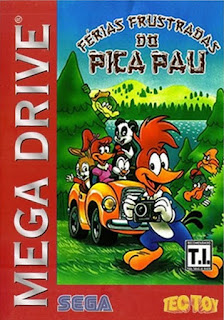
Hoping to better compete with Nintendo, Sega released another console, the Sega Mark III, in Japan in 1985.

Nakayama and Sega co-founder David Rosen arranged a management buyout with financial backing from CSK Corporation and installed CSK CEO Isao Okawa as chairman. Sega released another console, the SG-1000 II, featuring several hardware alterations, including detachable controllers. In 1984, parent company Gulf and Western Industries divested its non-core businesses including Sega, and Sega president Hayao Nakayama was installed as CEO. The launch coincided with the same day its competitor Nintendo launched the Famicom. On July 15, 1983, Sega released its first video game console, the SG-1000, in Japan. Retrospective criticism has recognized its role in the development of the Sega Genesis, and a number of well-received games, particularly in PAL (including PAL-M) regions, but is critical of its limited library in the NTSC regions, which were dominated by the NES. In addition, Tectoy has sold 8 million licensed Master System variants in Brazil. The Sega Master System is estimated to have sold between 10 and 13 million units worldwide. However, it attained significantly greater success in other markets, including Europe, Brazil, South Korea and Australia. Though the Master System had newer, improved hardware, it failed to overturn Nintendo's significant market share advantage in Japan and North America. Its library is smaller and with fewer well-reviewed games than the NES, due in part to Nintendo licensing policies requiring platform exclusivity. The Master System was released in competition with the Nintendo Entertainment System (NES). The later Master System II redesign removed the card slot, turning it into a strictly cartridge-only system, and is incompatible with the 3D glasses. Accessories for the consoles include a light gun and 3D glasses that work with a range of specially designed games. The original Master System models use both cartridges and a credit card-sized format known as Sega Cards.

The Master System II, a cheaper model, was released in 1990 in North America, Australasia and Europe. A Japanese version of the Master System was also launched in 1987, which features a few enhancements over the export models (and by proxy the original Mark III): a built-in FM audio chip, a rapid-fire switch, and a dedicated port for the 3D glasses. The Master System launched in North America in 1986, followed by Europe in 1987, and then in Brazil and Korea in 1989. It was originally a remodeled export version of the Sega Mark III, the third iteration of the SG-1000 series of consoles, which was released in Japan in 1985 and featured enhanced graphical capabilities over its predecessors. The Master System is an 8-bit third-generation home video game console manufactured and developed by Sega.

Yamaha VDP PSG ( SN76489), Yamaha YM2413 256 × 192 resolution, 32 colors on-screen


 0 kommentar(er)
0 kommentar(er)
